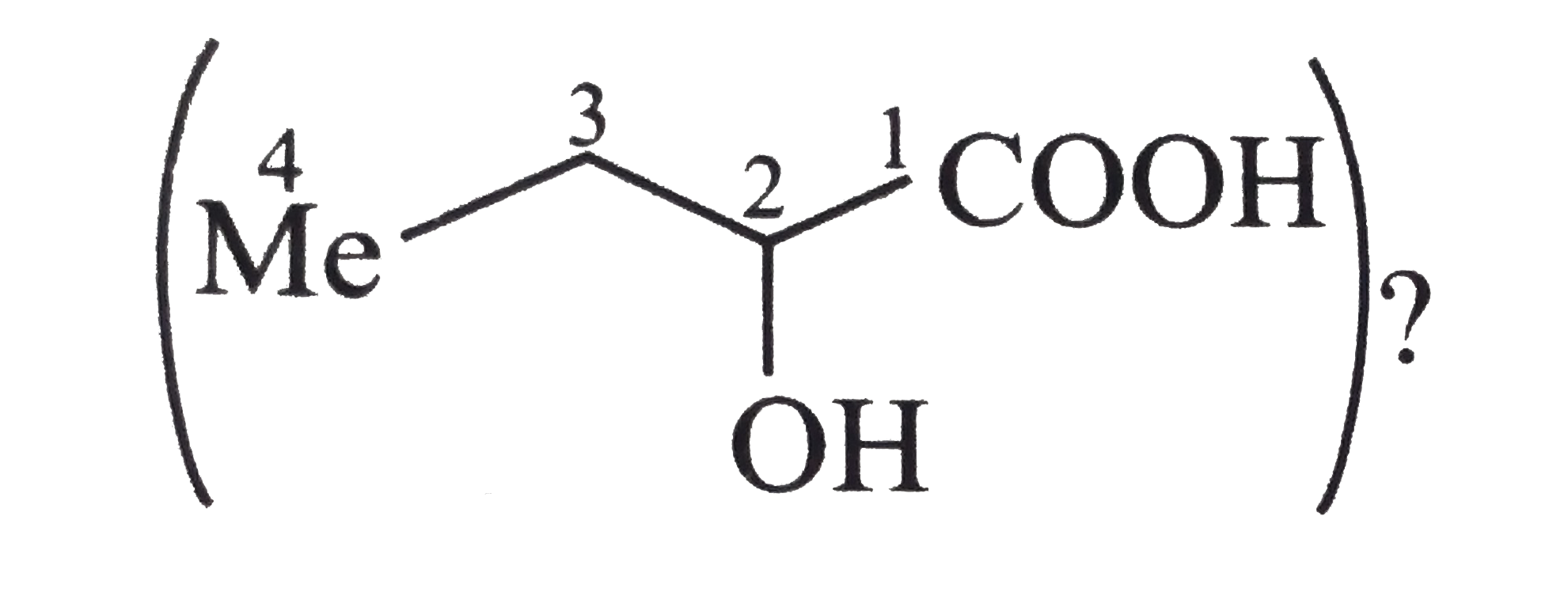Which of the following methods is/are correct for the synthesis of benzaldehyde?
a.PhCOClH2+Pd+BaSO4−−−−−−−−−−→
b.PhCOCl−−−−−−−−−−→LiAlH(OCMe3)3
c.
d.PhCH2Oh−−−−−−−−→Collins reagent
The correct Answer is:A, B, C, D
To determine which methods are correct for the synthesis of benzaldehyde, we will analyze each of the provided methods step by step.
Step 1: Understanding Benzaldehyde
Benzaldehyde is an organic compound with the formula C7H6O. It consists of a benzene ring (C6H5) with a formyl group (CHO) attached.
Step 2: Analyzing the First Method
The first method involves a carbonyl fluoride reacting with Lindlar's catalyst (Pd/BaSO4).
- Mechanism: Lindlar's catalyst selectively reduces alkynes to cis-alkenes and can also reduce acid chlorides to aldehydes.
- Conclusion: This method will yield benzaldehyde. This method is correct.
Step 3: Analyzing the Second Method
The second method uses lithium aluminum tertiary butoxy hydride (LiAl(OtBu)3H) to react with an acid chloride.
- Mechanism: The hydride ion (H-) from the reagent attacks the carbonyl carbon of the acid chloride, leading to the formation of benzaldehyde after the chloride leaves.
- Conclusion: This method will also yield benzaldehyde. This method is correct.
Step 4: Analyzing the Third Method
The third method involves diisobutylaluminium hydride (DIBAL-H).
- Mechanism: DIBAL-H provides a hydride ion that attacks the carbonyl carbon of an imine or a similar compound, followed by acidic hydrolysis to yield benzaldehyde.
- Conclusion: This method will yield benzaldehyde after hydrolysis. This method is correct.
Step 5: Analyzing the Fourth Method
The fourth method uses Collins reagent (PCC) to oxidize a primary alcohol.
- Mechanism: PCC is known for converting primary alcohols to aldehydes. If we start with a primary alcohol that can be converted to benzaldehyde, this method will work.
- Conclusion: This method will yield benzaldehyde. This method is correct.
Final Conclusion
All four methods provided for the synthesis of benzaldehyde are correct. Therefore, the answer is that methods A, B, C, and D are all correct.
Benzaldehyde is an organic compound with the formula C7H6O. It consists of a benzene ring (C6H5) with a formyl group (CHO) attached.
The first method involves a carbonyl fluoride reacting with Lindlar's catalyst (Pd/BaSO4).
- Mechanism: Lindlar's catalyst selectively reduces alkynes to cis-alkenes and can also reduce acid chlorides to aldehydes.
- Conclusion: This method will yield benzaldehyde. This method is correct.
The second method uses lithium aluminum tertiary butoxy hydride (LiAl(OtBu)3H) to react with an acid chloride.
- Mechanism: The hydride ion (H-) from the reagent attacks the carbonyl carbon of the acid chloride, leading to the formation of benzaldehyde after the chloride leaves.
- Conclusion: This method will also yield benzaldehyde. This method is correct.
The third method involves diisobutylaluminium hydride (DIBAL-H).
- Mechanism: DIBAL-H provides a hydride ion that attacks the carbonyl carbon of an imine or a similar compound, followed by acidic hydrolysis to yield benzaldehyde.
- Conclusion: This method will yield benzaldehyde after hydrolysis. This method is correct.
The fourth method uses Collins reagent (PCC) to oxidize a primary alcohol.
- Mechanism: PCC is known for converting primary alcohols to aldehydes. If we start with a primary alcohol that can be converted to benzaldehyde, this method will work.
- Conclusion: This method will yield benzaldehyde. This method is correct.
All four methods provided for the synthesis of benzaldehyde are correct. Therefore, the answer is that methods A, B, C, and D are all correct.
Topper's Solved these Questions
- REDUCTION AND OXIDATION REACTION OF ORGANIC COMPOUNDSBOOK - CENGAGE CHEMISTRY ENGLISHCHAPTER - REDUCTION AND OXIDATION REACTION OF ORGANIC COMPOUNDSEXERCISE - Exercise (Single Correct)
90 Videos
- REDUCTION AND OXIDATION REACTION OF ORGANIC COMPOUNDSBOOK - CENGAGE CHEMISTRY ENGLISHCHAPTER - REDUCTION AND OXIDATION REACTION OF ORGANIC COMPOUNDSEXERCISE - Exercise (Assertion And Reasoning)
10 Videos
- REDUCTION AND OXIDATION REACTION OF ORGANIC COMPOUNDSBOOK - CENGAGE CHEMISTRY ENGLISHCHAPTER - REDUCTION AND OXIDATION REACTION OF ORGANIC COMPOUNDSEXERCISE - Exercise (Linked Comprehension)
52 Videos
- QUALITATIVE INORGANIC SALT ANALYSISBOOK - CENGAGE CHEMISTRY ENGLISHCHAPTER - QUALITATIVE INORGANIC SALT ANALYSISEXERCISE - Viva Voce Questions And Part-C (Analysis Of Cations)
42 Videos
- SOLID STATEBOOK - CENGAGE CHEMISTRY ENGLISHCHAPTER - SOLID STATEEXERCISE - Ex 1.2 (Objective)
9 Videos
Similar Questions
Knowledge Check
Which of the following can be used for the synthesis of benzyl acetate?
APh−CH2−OH+(CH3CO)2O→B C
C DC6H5CH2OH+CH3COOHNaOH−−−→
DC6H5CH2OH+CH3COOHNaOH−−−→Which of the following elements are required for chlorophyll synthesis?
AFe and MgBMo and CaCCu and CaDCa and K
Which one of the following methods is neither meant for the synthesis nor for separation of amines ?
View SolutionIn protein synthesis, Which of the following are required for the synthesis of charged tRNA ?
View SolutionWhich of the following is the best method for the synthesis of α−hydroxy butyric acid (I) ?
 .
.
View SolutionWhich of the following microelements is related to the synthesis of plant auxin (IAA) ?
View SolutionWhich of the following microelements is related to the synthesis of plant auxin (IAA) ?
View SolutionWhich of the following is required for auxin synthesis?
View Solution
